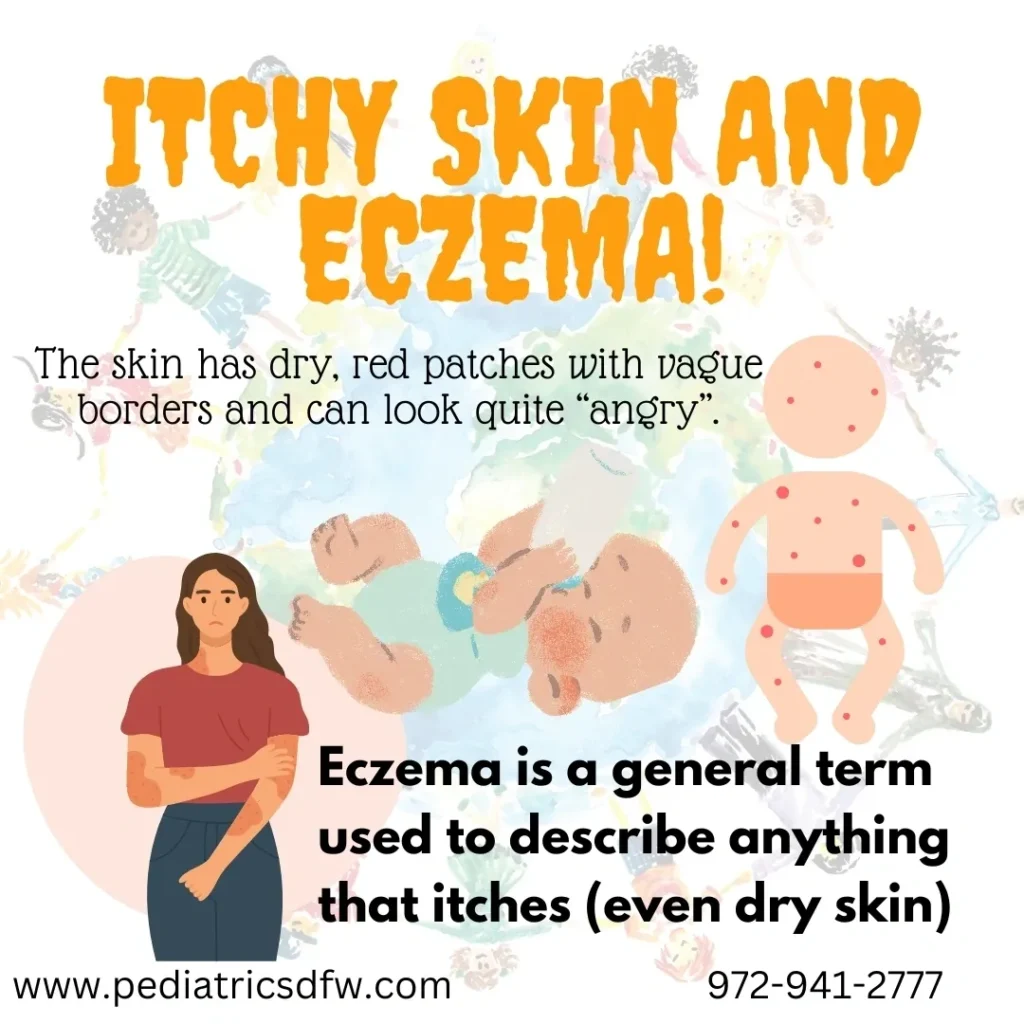
Itchy Skin and Eczema
Your child is scratching ninety to nothing and you may or may not see a rash. What is it?
It is my opinion that there are 3 things that can cause itchy skin – and in order of frequency they are DRY SKIN, ECZEMA and SCABIES (which will be addressed later). Here are some things for you to do.
For a person of any age that has dry skin that is causing itching, with no discernible rash, the obvious thing to do is to apply emollients and moisturizers to the skin and to avoid things that cause the dryness in the first place, This would include limiting bath time and the use of harsh soaps, limiting bubble baths and reviewing clothing choices such as woolens.
Eczema is a general term used to describe anything that itches (even dry skin). I tend to look at it as either atopic dermatitis or contact dermatitis. Atopic dermatitis may well be the most common skin issue seen in humans and can begin as early as 1-2 months of age, especially in those with a positive family history for atopy (includes dermatitis, allergies and asthma and what family DOESN’T have one of those??). In infants it typically begins on the face but can spread to the torso and the extremities. The skin has dry, red patches with vague borders and can look quite “angry”. In older children the lesions tend to be more circular in shape and are raised, red, and itchy. Annular atopic dermatitis is commonly misdiagnosed as ringworm due to the shape but does not have the central clearing within the lesions like ringworm does. Also, the usual areas affected are in the flexural zones such as the creases in the elbow and knee, but again this can occur ANYWHERE on the body. In adolescents and adults, atopic dermatitis will appear as scaly lesions. There is no cure for atopic dermatitis but there are many things used for treatment and control of symptoms. We always begin by addressing the dryness first by applying emollients and moisturizers and using hypoallergenic detergents, soaps and shampoos. If you have used these for a week or so and do not see improvement, a visit to the pediatrician is needed to assess for need of prescription topical steroid medications. Topical steroids are classified as low potency, mid potency, or high potency. High potency medications are rarely, if ever, used in pediatric patients because the very things added to make them high potency can cause irreversible changes on your child’s skin. Mid potency medications are for older children and are never used on the face. Low potency medications are always tried first and are also the only ones used on the face and for infants and toddlers. For this reason, never apply a left-over medication for someone else on your child without knowing if it is appropriate for age and location of rash. Also, they are typically applied twice a day for as short of time as possible. They are not for chronic, daily use – EVER! An antihistamine may be recommended to help control the itching. Resistant or severe cases may need a dermatologist.
Contact dermatitis, if not obvious by the name, is due to something that comes into contact with the skin that then leads to irritation and inflammation. In addition to harsh soaps, you must consider things like perfumes and dyes used in body products, some foods, jewelry and metal snaps/closures on clothing and sometimes the clothing itself. Believe it or not, a child’s own saliva can cause contact dermatitis. In addition, a special category would include exposure to plants such as poison ivy and poison sumac. Contact dermatitis tends to be less itchy than atopic dermatitis and will clear when the offender has been identified and removed. Topical steroids may or may not be needed, as well as an antihistamine for itching.
